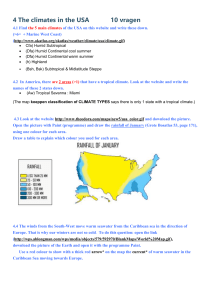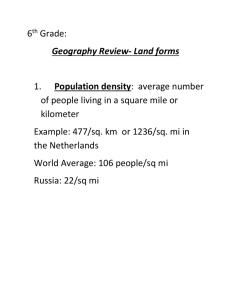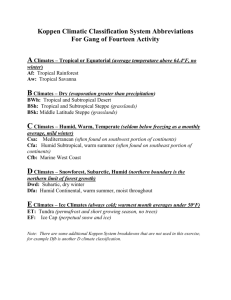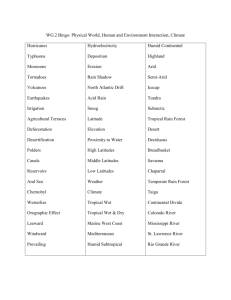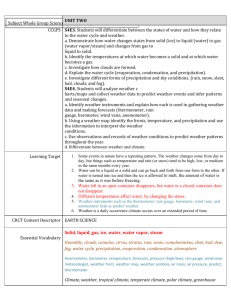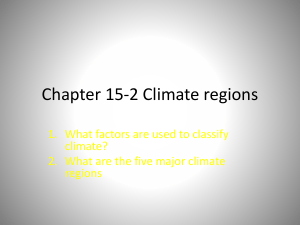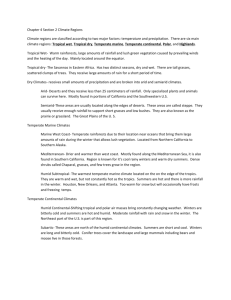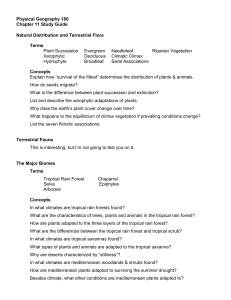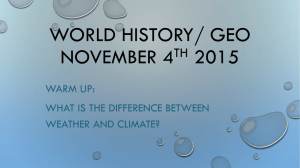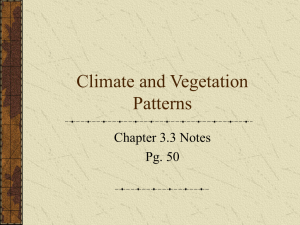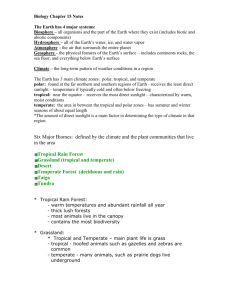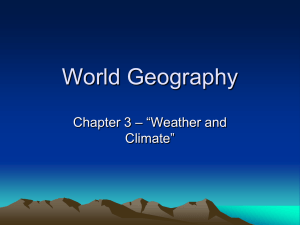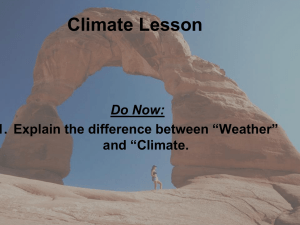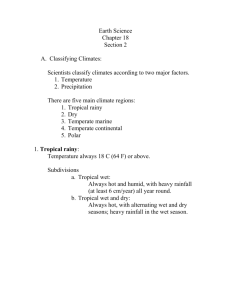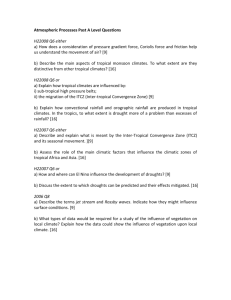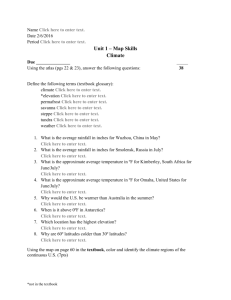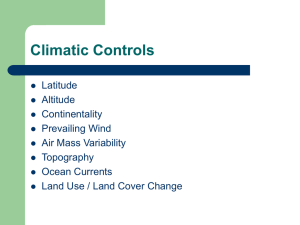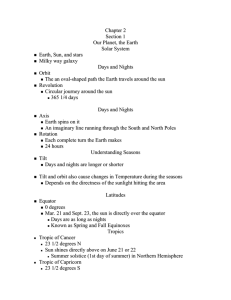Climate Regions
advertisement
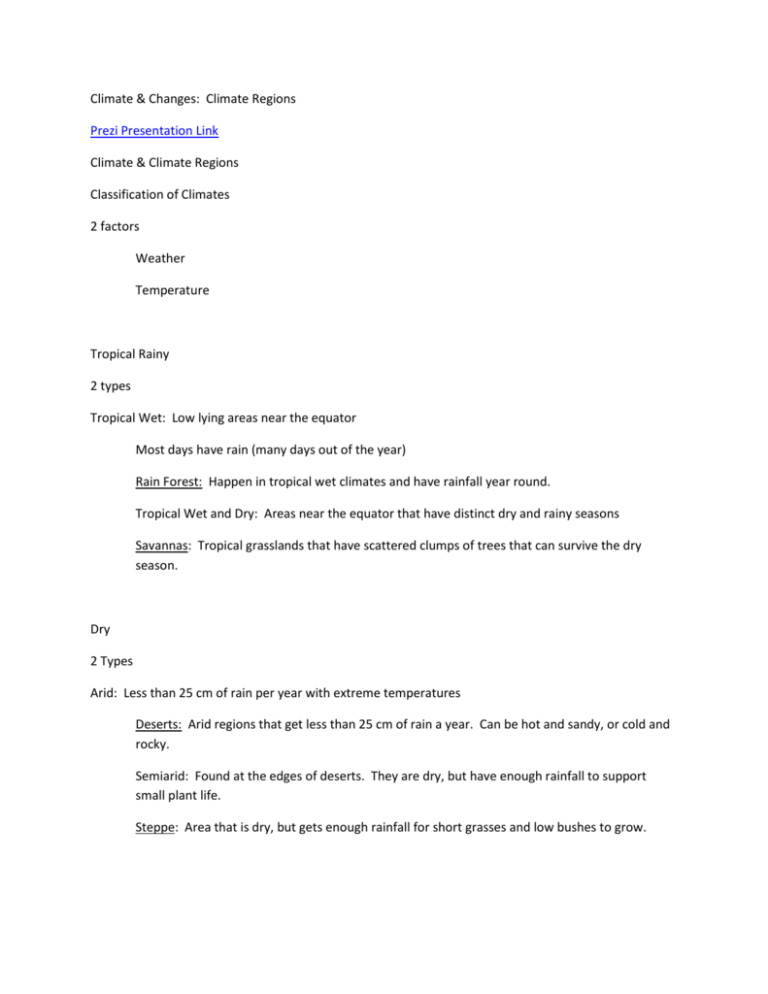
Climate & Changes: Climate Regions Prezi Presentation Link Climate & Climate Regions Classification of Climates 2 factors Weather Temperature Tropical Rainy 2 types Tropical Wet: Low lying areas near the equator Most days have rain (many days out of the year) Rain Forest: Happen in tropical wet climates and have rainfall year round. Tropical Wet and Dry: Areas near the equator that have distinct dry and rainy seasons Savannas: Tropical grasslands that have scattered clumps of trees that can survive the dry season. Dry 2 Types Arid: Less than 25 cm of rain per year with extreme temperatures Deserts: Arid regions that get less than 25 cm of rain a year. Can be hot and sandy, or cold and rocky. Semiarid: Found at the edges of deserts. They are dry, but have enough rainfall to support small plant life. Steppe: Area that is dry, but gets enough rainfall for short grasses and low bushes to grow. Temperate Marine Climates Found near oceans All types have humid, mild winters Marine West Coast: Coolest, mild rainy winters, summer precipitation varies (Found on west coast of US). Allows for thick forests and tall trees. Mediterranean: Drier and warmer (S. Coast of California and Mediterranean sea). Mild temperatures, winter---rainy, summer---little rain Humid Subtropical: Found in the edges along the tropical/temperate zone. Climates are wet and warn, but not constantly hot. Found in the southern tips of the US. Temperate Continental Climates Only on Continents in N. Hemisphere Humid Contental: Tropical and polar air masses shift, changing temperature and precipitation constantly. In winter, cold weather moves in from the polar, and in summer, tropical bring heat and humidity. These areas receive moderate rain in the summer, and small amounts in the winter. Subarctic: North of the humid continental. Has short, cool summers, and Long very cold winters. Polar Climates Coldest climate region Ice Cap: Found on greenland and Antartica Avg. temps at or below freezing Covered with ice and snow year round Very dry air---due to ice Tundra: Short, cool summers….Long Cold winters Permafrost: Permanently frozen tundra soil Highlands Areas of high elevation within other regions High elevation makes them colder than the areas around them Usually has low temperatures and more precip than areas around them. Will have a tree line where areas at a certain elevation are too cold for trees to grow.
